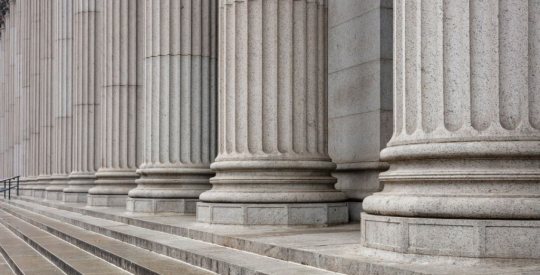The Congressional Oversight Panel held its final hearing on the Troubled Asset Relief Program Friday with mixed results. While COP roundly agrees that the bailout funding did effectively rescue many of the country’s financial institutions, at the same time it underserves smaller banks and the taxpayers who fund it. Congress cleared the Treasury Department to launch the biggest financial rescue in U.S. history on Oct. 3, 2008. The primary purpose is stabilizing the nation’s banking sector by spending more than $700 billion on preferred stock from large banks and other firms and purchasing toxic holdings, such as residential mortgage-backed securities. Assistant Treasury Secretary Tim Massad testified that TARP will end up spending no more than $475 billion. 86% of that is disbursed to date. So far, the Treasury received $277 billion back, including $241 billion in repayments and $36 billion in additional income. The Treasury expects to receive another $9 billion next week, leaving $150 billion outstanding through various investments the department hopes to recover within the next few years. “TARP helped bring our financial system back from the brink and paved the way for an economic recovery,” Massad said. “Banks are better capitalized, and the weakest parts of the financial system no longer exist. The credit markets on which small businesses and consumers depend — for auto loans, for credit cards and other financing — have reopened. Businesses can raise capital, and mortgage rates are at historic lows.” But smaller banks have not been so lucky. In 2010, more than 150 banks failed, an overwhelming majority of them were community banks, troubled in large part by commercial real estate. Homeowners feel left out, too. The closest thing they received to a bailout was the Home Affordable Modification Program, an initiative designed under TARP to use a revised $30 billion in funding to urge servicers and investors to modify troubled mortgages. The result has been slightly more than 600,000 mods, far short of the 3 million to 4 million originally estimated by the Treasury. The Treasury recently said that is an overestimate. According to the latest HAMP report, 1.4 million are currently eligible for the program. COP estimates the program will reach no more than 800,000. “It is no wonder, then, that many Americans view the TARP as a program designed and executed for the benefit of Wall Street CEOs rather than Main Street homeowners,” said COP Chairman Sen. Ted Kaufman, D-Del.. HAMP is currently under the gun, facing elimination from Republican lawmakers. The House Financial Services Committee will hold debate over a bill terminating the program next week. Panel member and the New York Superintendent of Banks Richard Neiman asked Massad for more information on proprietary modifications that were modeled on HAMP but done outside of the Treasury’s scope. “We need more data on non HAMP mods. Those are outside of our program and outside of our reporting system,” Massad said. “We have suggested that to the servicers.” “This should be a high priority to find a way to get this information released,” Neiman said. But Kaufman said TARP has far more “noxious cost.” “Moral hazard, that lingering belief that America’s biggest banks are ‘too big to fail’ – that the rules that apply to everyone else in America do not apply to them,” Kaufman said. “This belief continues to distort our financial markets, advantaging the largest banks on Wall Street while disadvantaging every other bank in the country. The cost of moral hazard is not easily quantifiable, but it is real, and it is reprehensible.” Overall, Massad said while there are things he wishes the Treasury would have done better, and even though some homeowners are being left behind, TARP pulled the economy from crisis to a recovery. “Unemployment remains unacceptably high; the housing market remains weak. But the worst of the storm has passed and our economy is on the road to recovery,” Massad said. “We don’t know what the next financial crisis will be, but I believe we have the tools necessary under Dodd-Frank. The moral hazard issue is a very significant one. Again, it’s up to us now to take the tools Congress has given us and mitigate that risk.” Write to Jon Prior. Follow him on Twitter: @JonAPrior
COP delivers mixed verdict on TARP in final hearing
Most Popular Articles
Latest Articles
DOJ charges one of America’s top LOs in alleged mortgage fraud scheme
Christopher Gallo was charged with one count of conspiracy to commit bank fraud.
-
Top Producer Review: Features, pricing & alternatives
-
A&D Mortgage names new servicing manager
-
HUD aims to help protect communities from extreme heat
-
Freedom Mortgage founder addresses ’extraordinary’ credit profiles, profitability and products
-
Realty One Group joins growing list of firms to settle commission lawsuits



